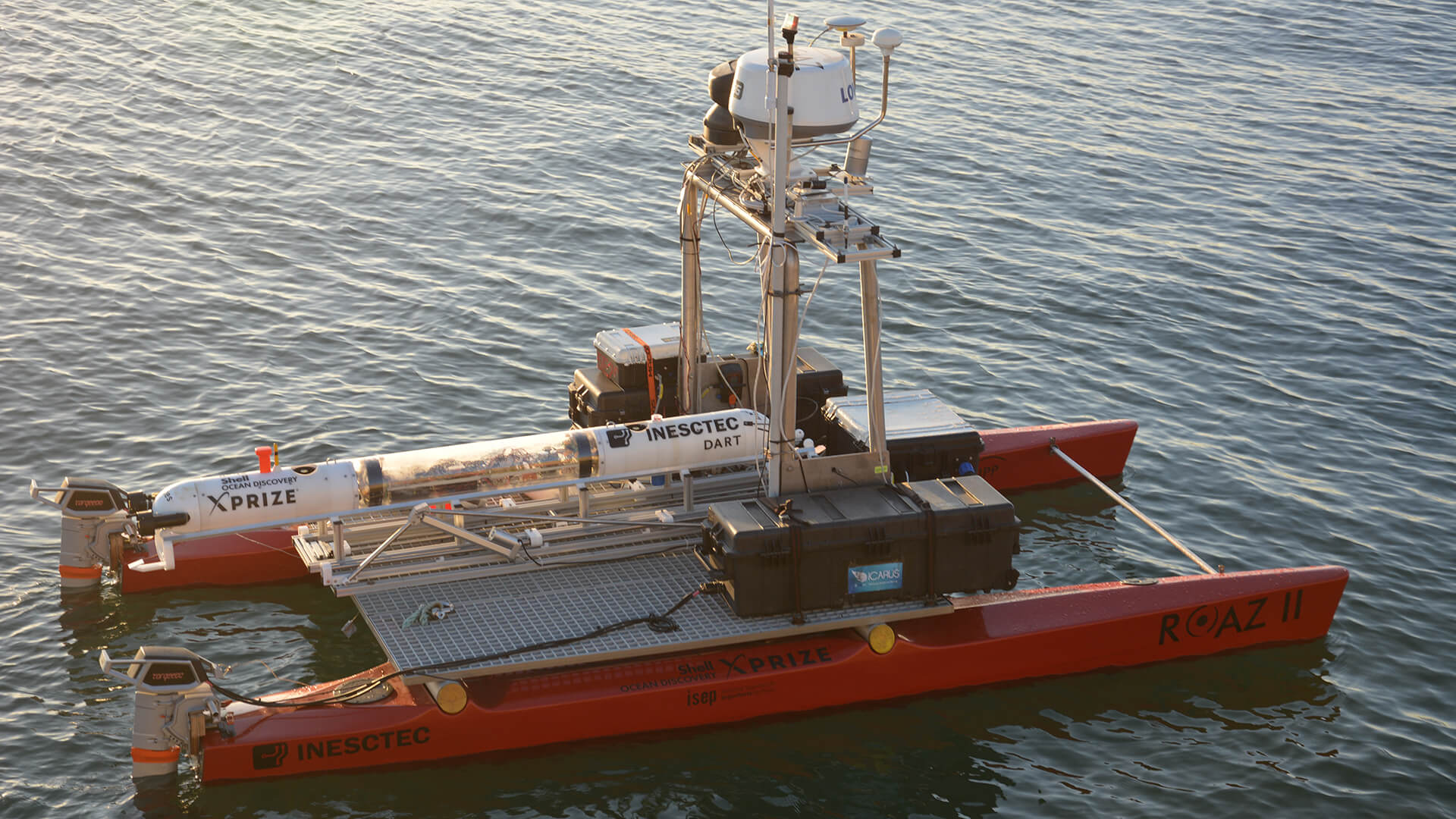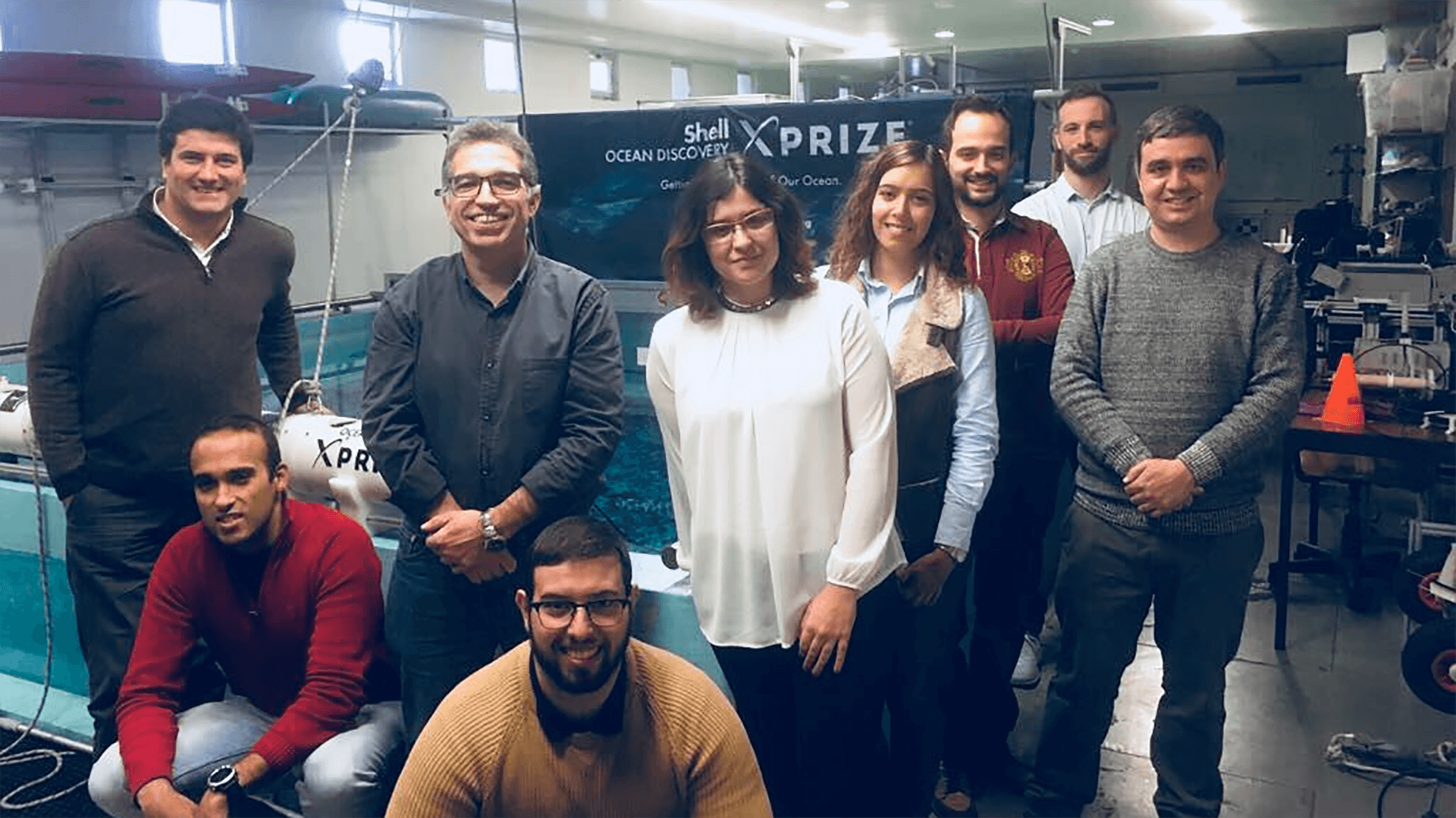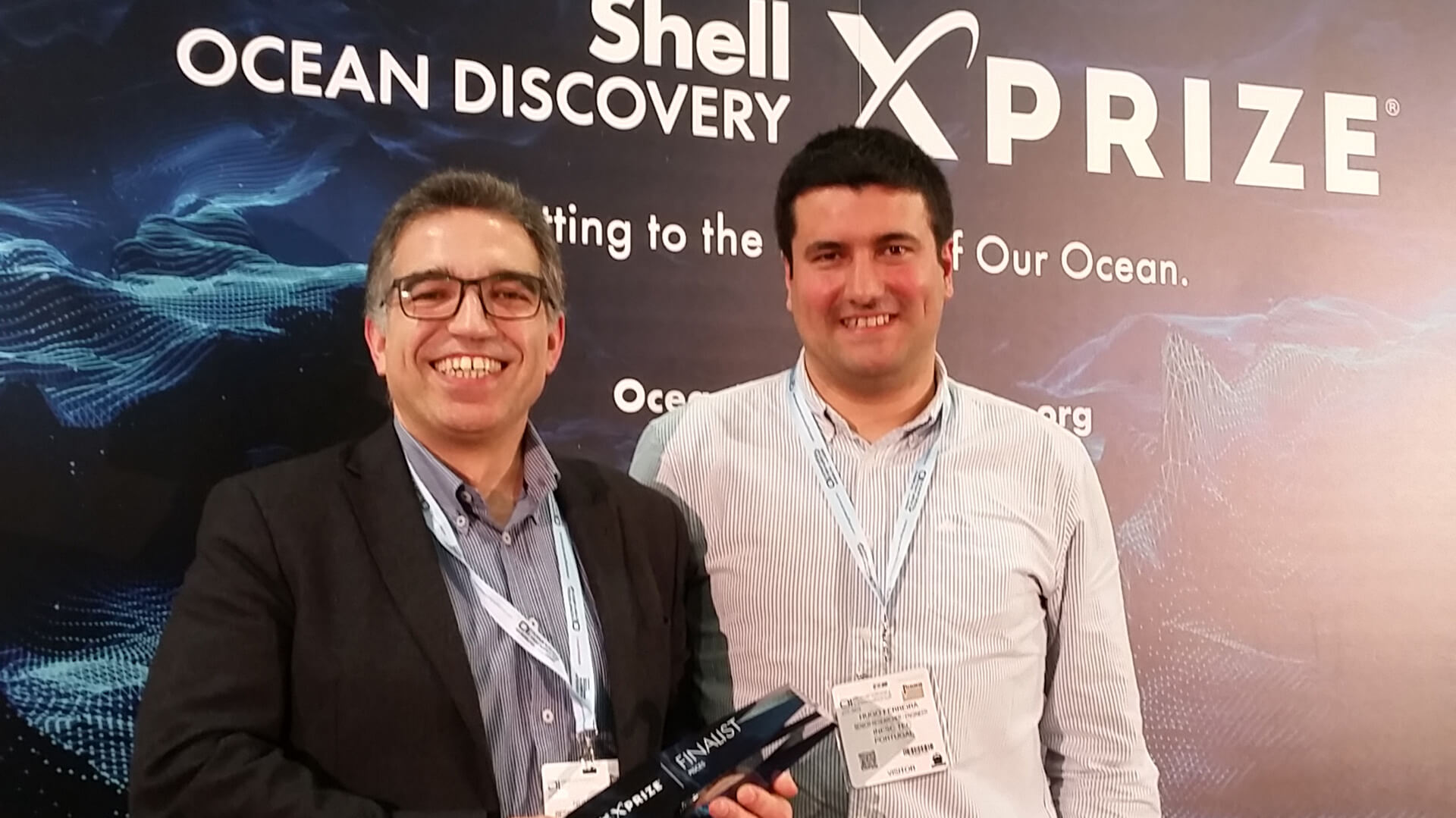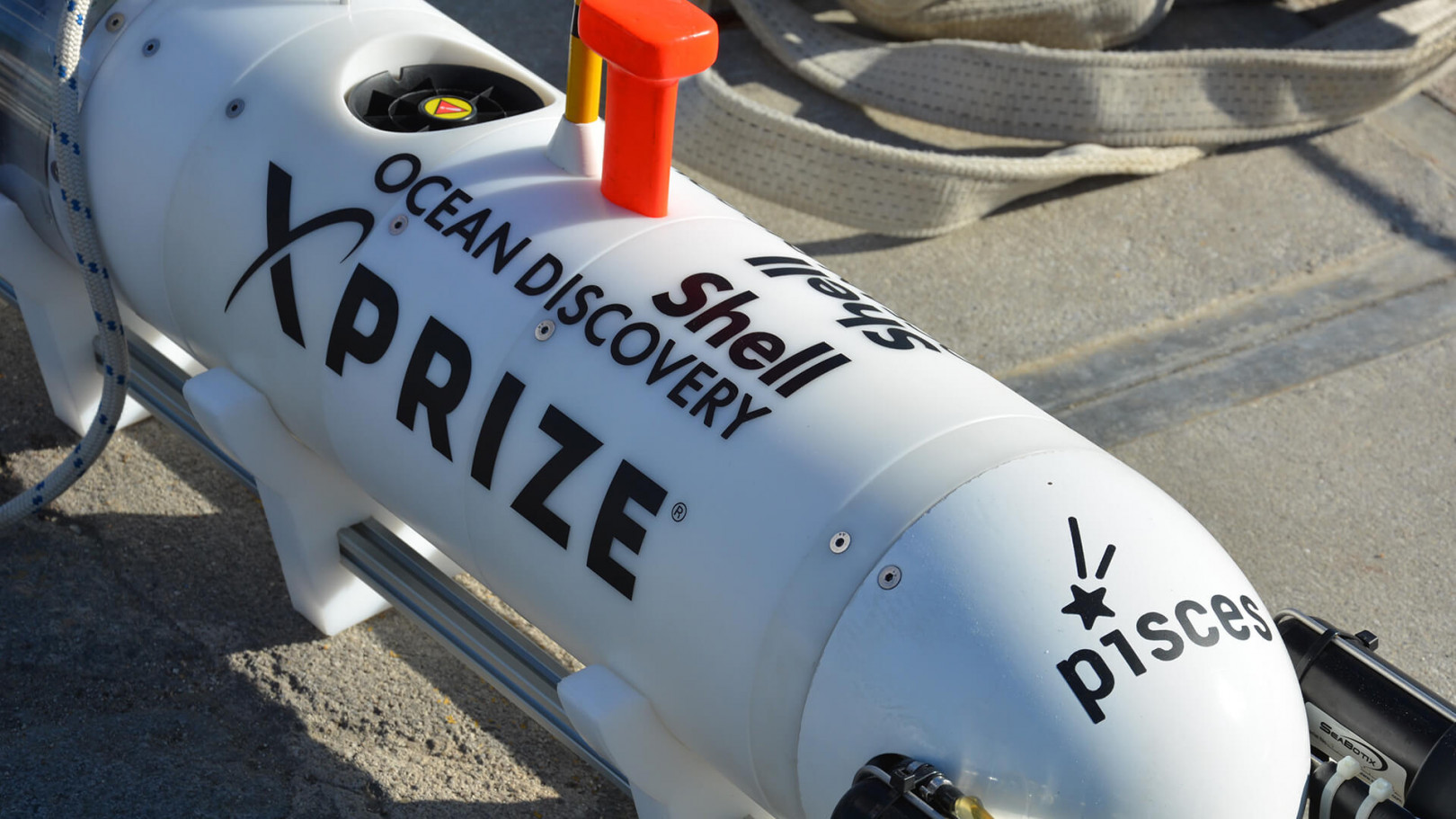INESC TEC reaches the international competition final to explore the deep sea
An INESC TEC research team advanced to the final round of the Shell Ocean Discovery XPrize’s international competition.
29th March 2018
Innovative technology tries to address gaps about knowledgement of the oceans
The team aimed to develop technologies in order to collect data and to map the deep sea in difficult access areas that are yet to be explored. The project was awarded €90 000 ($111 000), acknowledged by the project leader on 15 March.
A unique national idea
The INESC TEC team’s approach is called PISCES – Cooperative Robots for Deep Ocean Exploration. The team is comprised of 24 researchers from INESC TEC and from the Centre for Technological Research of the University of Algarve (CINTAL). According to the team leader, Nuno Cruz, “a multidisciplinary team could be the answer to address a thorny issue”.
The submitted proposal is based on the combination of several marine robotic platforms in order to create an effective and efficient solution to explore the seabed. The robots and submarines must be operated together and incorporate acoustic navigation and a mapping system.
This project is in line with INESC TEC’s strategy for the development of deep sea exploration technologies, supported by the TEC4SEA initiative, which is part of a national roadmap of research infrastructures and its aim it to observe, explore and operate in deep waters through autonomous systems.

A different story between boats and submarines
At an initial stage, the proposal presents an autonomous deepwater submarine named DART and an autonomous boat named ROAZ. DART carries sonars, video cameras and lights and uses that material to collect images and to map the seabed.
The goal is to carry DART on board the ROAZ to the site of operation (dozens of miles from the coastline) in order to map. At the end of this mission, DART is then collected and brought to land.
However, and since GPS systems don’t work underwater, there are two more boats on the surface to solve the navigation issue. The boats will guide the submarine with sound emissions and for that reason the submarine will have to autonomously adapt his itinerary during the navigation and every time the submarine encounters barriers or collects data. According to contest rules, the journey should be done at at least four kilometres of depth.
During the mission, the satellite communication with ROAZ and the other boats will be maintained.

An international and unique competition
The seabed access and exploration has been a challenging process and subject of physical, economic and technological restrictions. Shell Ocean Discovery XPrize, entitled «Getting to the bottom of our ocean» is a competition that challenges different teams to test their limits on seabed study technologies, developing solutions that enables progress in terms of autonomy, scale, speed, depth and resolution of the maritime exploration.
At the beginning of the competition there were 25 countries participating with 19 teams. The purpose of the competition is to develop innovative technological projects, enabling the seabed exploration and mapping, overcoming the current issues and even exposing new resources for the benefit of humanity.
XPRize is a non-profit organisation which promotes important challenges as competitions, trying to address serious problems by providing disruptive and innovative solutions. This particularly idea emerged two years ago in order to address the lack of deep sea information, therefore mapping the seabed as far as possible.
A journey that can become unique
In 2016, PISCES team presented their project by submitting an application with more 30 teams. A preselection was made based on the submitted proposals, interviews and clarifications of the ideas, resulting in the acceptance of 19 semi-finalists teams one year later.
At the end of 2017, those 19 teams had to demonstrate their technologies and were assessed by the organisation in order to understand if the requirements were met. The PISCES’ tests were carried out on December 2017 at Port of Leixões, in Matosinhos.
After the tests results, nine teams advanced to final round where each one of them has received €90 000 (or $111 000 of a $1M prize equally distributed between finalists). The prize was recognised on 15 March at an international oceanology event, also organised under the Shell Ocean Discovery XPrize, entitled “Catch the Next Wave”, which was held in Lisbon.

A number of tests are expected to determine the winner during the fourth quarter of 2018. At this stage, there is a competition between four European teams (Portugal, Switzerland, Germany and United Kingdom), one Japanese team and four USA teams.
The only Portuguese team is from INESC TEC
Since different skills are needed to design this proposal, the INESC TEC team gathers elements of different institutions in several fields of action, combined with 20 years experience of aquatic environment research.
At the Centre for Robotics and Autonomous Systems (CRAS), the mission is to develop innovative robotic solutions for complex environments and multiple operations, including data gathering, inspection, mapping, surveillance, and intervention. CRAS works in four main areas of research: autonomous navigation; long-term deployments; sensing, mapping, and intervention; multiple platform operations.
From INESC TEC, 17 collaborators participating in this project are from CRAS, namely Alexandra Nunes, Alfredo Martins, Ana Rita Gaspar, André Dias, Andry Pinto, Aníbal Matos, Bruno Ferreira, Carlos Gonçalves, Eduardo Silva, Guilherme Amaral, Hugo Ferreira, Jorge Barbosa, José Almeida, José Alves, Nuno Abreu, Nuno Cruz and Vítor Pinto, together with António Silva, Ana Moreira, Ashley Hughes, Luís Santos, Marcos Martins, Orlando Rodríguez and Pedro Margarido, from the University of Algarve/CINTAL.
The researchers mentioned in this news piece are associated with INESC TEC, UP-FEUP and ISEP-IPP.


